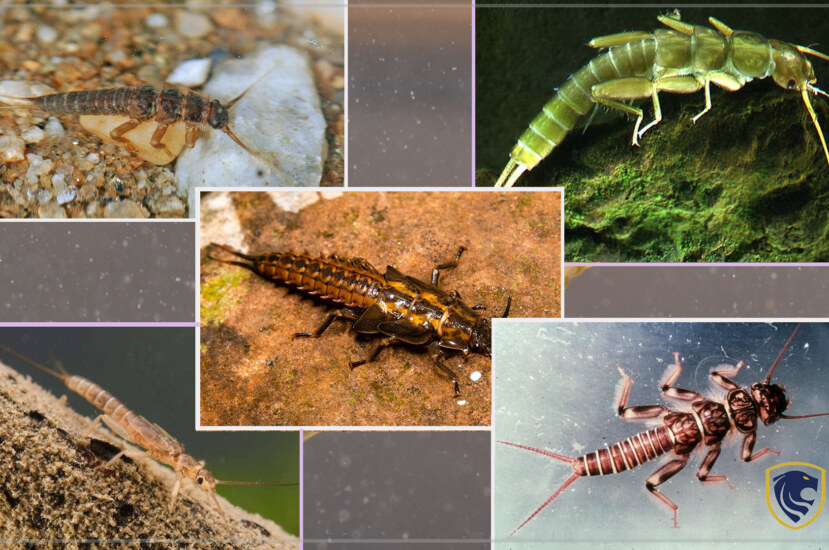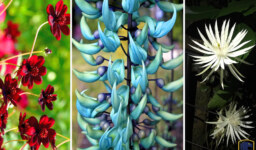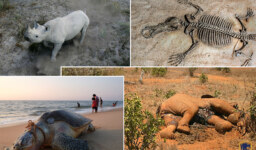The volume and diversity of plants and animals that inhabit riverine aquatic settings are known as aquatic biodiversity. They contribute significantly to the biological productivity of the earth and serve as an important reservoir. Aquatic resources and biodiversity have a close relationship with one another, perform a wide range of tasks, and are useful and necessary for the survival of biotic groups. There are a vast variety of insects habituated in the aquatic environments. When exploring aquatic insects, we can see various adaptations that they have developed to maintain their existence in aquatic environments.
Who are insects?
Insects belong to the largest class of animal phyla which is the phylum Arthropoda. They have segmented bodies that consist of three main parts head, the three-segmented thorax, and the abdomen. Animals like insects have existed on the planet for at least 300 million years, making them much older than dinosaurs
What is an adaptation?
Adaptation is the physical or behavioral characteristic of an organism that helps an organism to survive better in the surrounding environment.”
Why do species need adaptation?
Every species should adapt to the environment in order to exist and maintain its kind. These adaptations are mostly genetic. It is aided by genetic mutation and passes through generations when reproducing. There are three categories of adaptation which are Structural adaptations, behavioral adaptations, and phycological adaptations.
Adaptations in aquatic insects
Based on the size, aquatic environments can be categorized into two groups. The term “aquatic macrohabitat” refers to vast, intricate ecosystems such as lakes, ponds, and seas. The single blade of a submerged plant is an example of a much smaller environment known as an aquatic microhabitat. Moreover, microhabitats are the exact locations that members of a given species or group like to inhabit. Within a bigger system, there are lots of smaller habitats. Intriguing internal modifications created to fit their lifestyles can be seen in insects. So, let’s explore the Adaptations of riverine aquatic insects by diving them into some categories.

Adaptations of riverine aquatic insects for their mode of life
Respiration
Insects don’t contain lungs to breathe. Oxygen enters a terrestrial insect’s body mostly through a small opening in their exoskeleton called a spiracle. But when living in water respiration systems have upgraded relevant to the habituate.
Most aquatic insects have not developed to gain dissolved oxygen in the water. Therefore, they receive oxygen directly from the atmosphere. These are called Snorkelers
Snorkelers
Snorkelers have a special tube in contact with spiracles. Therefore, they place them on the surface of the water to obtain oxygen. In addition, the hairs they have on the tips of these tubes help repel water.
Examples:
- aquatic larvae of some Mosquitoes
- flower flies
SCUBA divers
Insects such as aquatic beetles can take air bubbles inside the water by trapping them under their wings on the ends of their abdomens. Some insects are covered with dense hairs which don’t wet. They can trap a thin, silvery sheath of air called a plastron.
Examples: Water Boatmen and adult Riffle Beetles
These scuba tank-like bubbles diffuse more oxygen from the surrounding water when the insect consumes oxygen. But that bubble collapses when nitrogen gas diffuses in. Then the insect must reach the surface again to get another air bubble.
Gills or appendages
Most insects that have successfully adapted to aquatic environments have “gills” or “appendages” to extract oxygen from water. Gills are a type of special membrane that can get oxygen when water circulates through them. They evacuate the need of moving to the surface to seek more oxygen. For instance, the internal gills of dragonfly larvae gently inflate and deflate their abdomens to circulate water.

Adaptations of riverine aquatic insects for their mode of life
Aquatic insects show different kinds of appendages that facilitate more surface area for oxygen to pass through.
- damselflies and some mayflies – paddle or leave-shaped appendages
- some mayflies and stoneflies – tufts-shaped appendages
- Black Fly pupae – tiny strands shaped appendages
One downside of having gills or appendages is being vulnerable to lower water oxygen levels. But most insects have special adaptations to reduce the inconvenience of obtaining oxygen in such instances.
In less-than-ideal circumstances, mayflies flap the gills along their abdomens, damselflies wave their tail-like gills, and stoneflies perform “pushups” to enhance water flow and oxygen consumption.
Other
Several varieties of beetles, flies, and mosquitoes use aquatic plants’ oxygen, which they make as a byproduct of photosynthesis.
Locomotion
Aquatic insects have legs and features adapted for swimming that are specialized for diverse forms of locomotion. These parts facilitate them to travel in order to find food, capture prey, find a mate, and escape from predators.
Scuttlers and squirmers
All the insects are hexapods and have six legs, connected to the thorax. Aquatic insects who have legs can use them to travel. Furthermore, some cling to surfaces using their claws. Some dig tunnels and move into mud or sand.
Adaptations to strong water currents
Insects who are living in strong water currents show adaptations to cling to the surface without washing through with the streams. As an example, some insects contain flat body phases to avoid floating with the currents and cling to the surface. Insects such as Net-spinner Caddisflies have stout claws, powerful legs, and strong hooks on the tip of their abdomens. The larvae of Net-winged Midges use suction cups to make a tight seal with the surface.

Adaptations of riverine aquatic insects for their mode of life
Swimmers
The ability to swim is a plus point when living in the water. The insect varieties that have the ability to swim can easily reach food and escape from predators. Most elementary aquatic insect swimmers do not contain special structures to swim. As an example, some Mosquitoes, many mayflies, and stoneflies use wriggling motions to swim.
Some insects who bare rowing legs and paddle-like structures are master swimmers. For instance, three leaf-shaped gills at the tips of Damselfly larvae’s abdomens and oars of water boatmen help them swim thoroughly.
Dragonfly larvae use quite different techniques to swim. For instance, they inflate water into their abdomen and squirt it through the end of the body. This helps them to move forward rapidly. They fold their legs backward to make the move much smoother.
Drifters
Some aquatic insects travel with the water currents. They allow water waves to locomote them to a new home. When strong currents occur in streams due to heavy rain or snow melts these insects have no choice but to float through. This is called “Catastrophic drift”. To avoid predators these drifters often dry drift dusk and dawn. For instance, Stream-dwelling mayflies, stoneflies, and caddisflies show this locomotion method.
Click to find the 2nd part of the article.





[…] respiration and locomotion methods according to their mode of life. If you missed the first article click here to read that […]